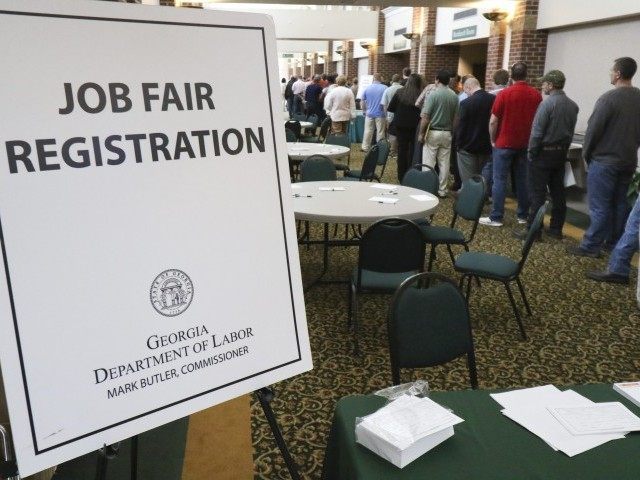The Labor Department reported the economy added 215,000 jobs in July. That’s well below the 260,000 monthly additions posted in 2014, and new employment opportunities and wage gains will continue depressed for the balance of this year and next.
Previously the Commerce Department reported GDP grew 2.3 percent in the second quarter. That figure will likely be revised up to 3 percent, but stronger economic growth is not translating into a more encouraging labor market
Importantly, U.S. manufacturers—where the best untapped potential for well-paying jobs remain—are burdened by an artificially strong dollar and skill shortages.
China, South Korea, Japan, and Germany target the value of their currencies against the dollar through direct central bank intervention or explicit limits on inward foreign investment. Those jurisdictions domicile the principal competitors for U.S. exports and import competing industries. But for the overvalued dollar, the U.S. economy could add some 4 million jobs directly in manufacturing and through multiplier effects in the services more highly paid factory workers would purchase.
In the current overvalued dollar environment, the strongest remaining area for potential jobs growth is in high value added manufacturing—for example, in advanced materials and metallurgy, chemicals, aircraft and components, advanced electronic components, robotics, and makers of equipment such as numerically controlled machine tools.
Along with logistics and supply chain management, those industries need more workers with skills in process controls, computer programming, and the like that have a year or two of post-high school training.
Most of those specialties are in short supply because opportunities for training are limited and many young people shun blue collar careers. Instead, they enroll at colleges hoping to land professional employment. Unfortunately, the economy has more college graduates than it needs, as witnessed by the many underemployed at Starbucks and similar venues.
Many white collar jobs—especially those that can be performed off site and through computer terminals can be moved off-site and performed abroad—for example backroom operations for banks and retailers.
The H-1B, which is intended to facilitate immigration of skills in short supply, is abused to bring lower-paid foreign workers here. Disney recently fired 250 American workers who tracked ticket sales, store purchases, and the like at its Orlando Florida theme park. But the folks who run the Magic Kingdom first required those Americans to train their foreign replacements to obtain severance benefits.
The historic pace of annual productivity growth is close to 2 percent, but thanks to West Coast port slowdowns, a severe winter, and lower oil prices, worker productivity fell a lot last fall and winter. Consequently, businesses have thousands of underutilized employees, and they will be able to service more rapidly growing demand by realizing untapped opportunities to get more out of existing workers.
Business balance sheets are remarkably stronger than in recent years. Although many companies have used extra cash to buy back stock and raise dividends, quietly, many have purchased new equipment and software to tighten supply chains and sharpen execution. Investments for these purposes relative to depreciation have been stronger than during boom years of the last decade and stronger productivity growth is likely.
All of this paints a more robust American private sector—even if blemished by a strong dollar—and labor shortages in key areas that constrain what it can deliver. Most workers will continue to face tough competition for good paying jobs.
Wages, after adjusting for inflation, remain stagnant, because good paying job openings go vacant for lack of qualified applicants while an army of lower skilled workers in the fast growing service sector pulls down the average wages.
Expect jobs growth to remain at about 215,000 per month and wages to barely keep up with inflation.
Peter Morici is an economist and professor at the University of Maryland, and a national columnist. Follow him on Twitter @PMorici1.

COMMENTS
Please let us know if you're having issues with commenting.